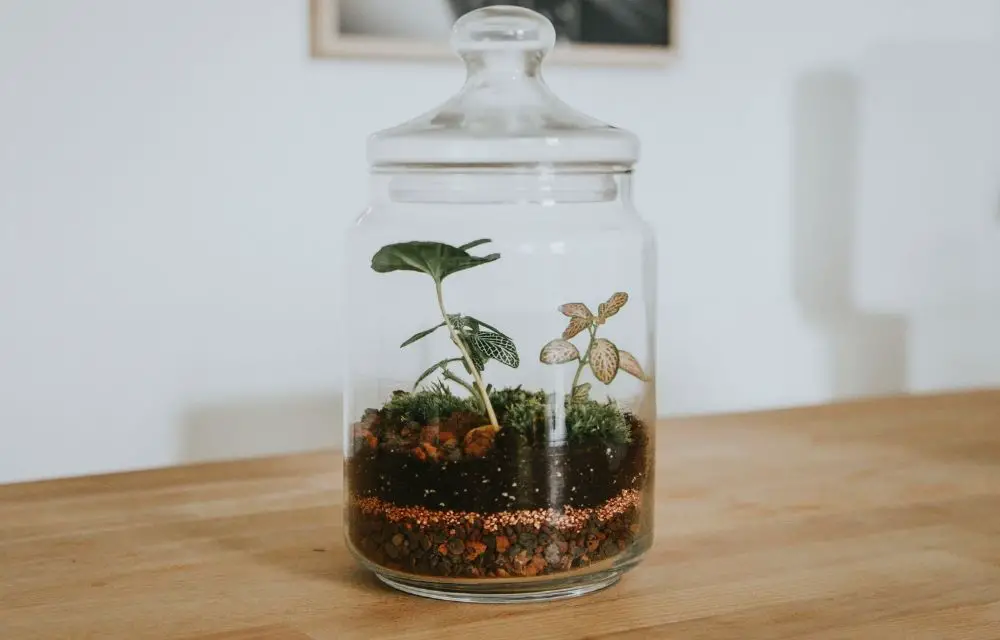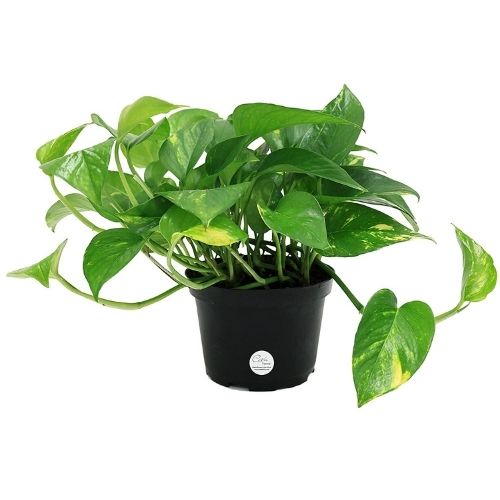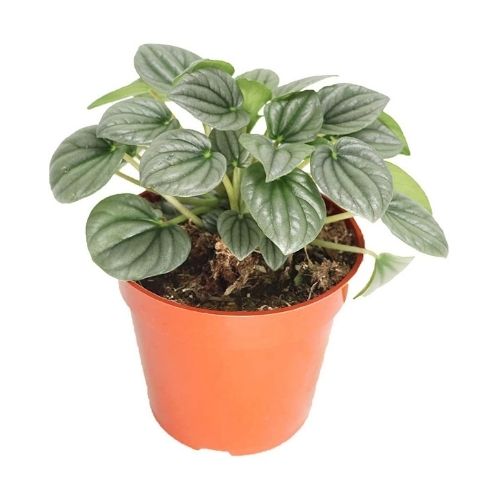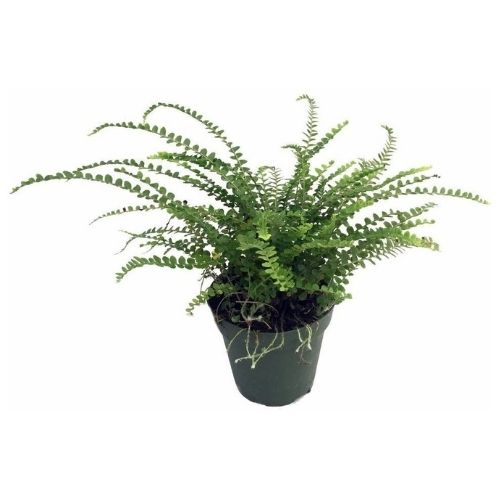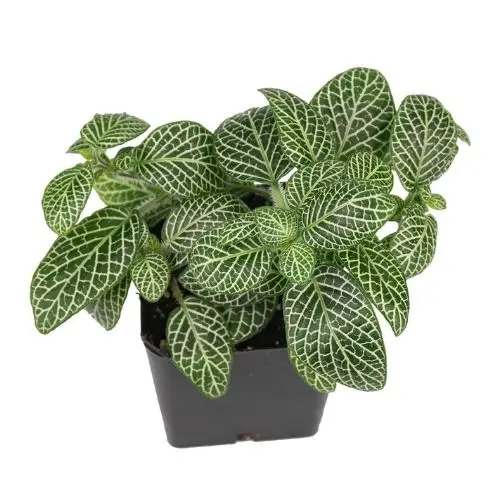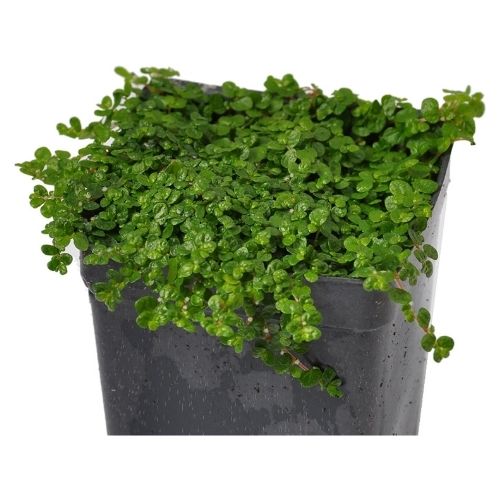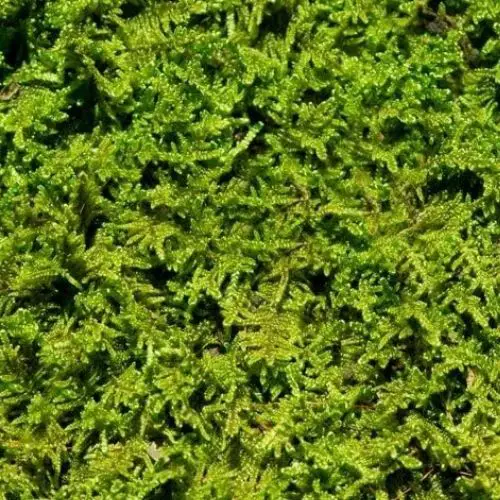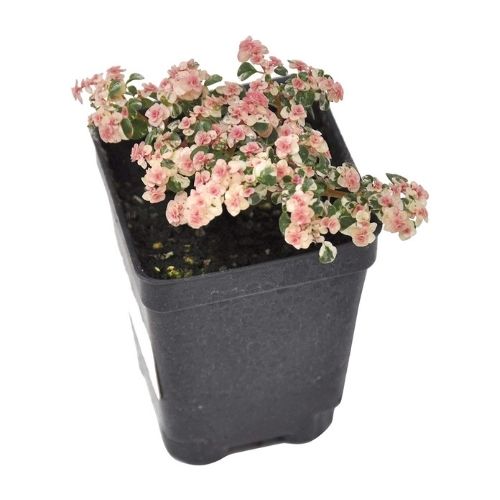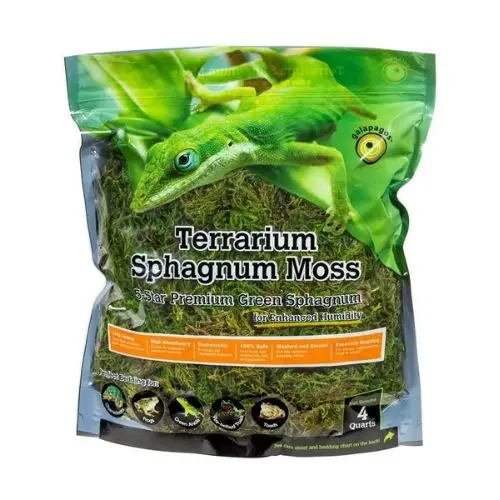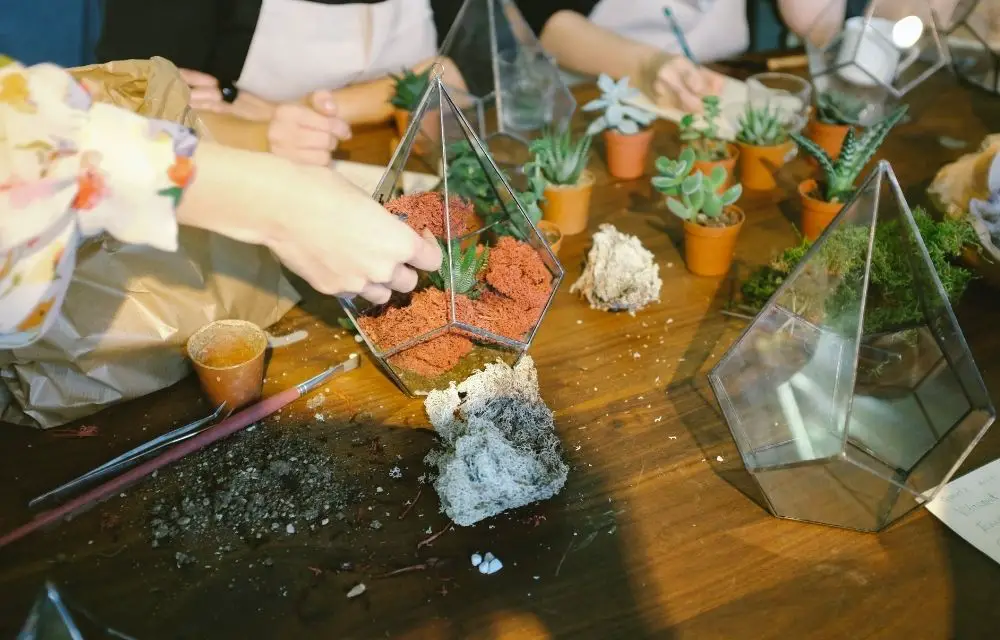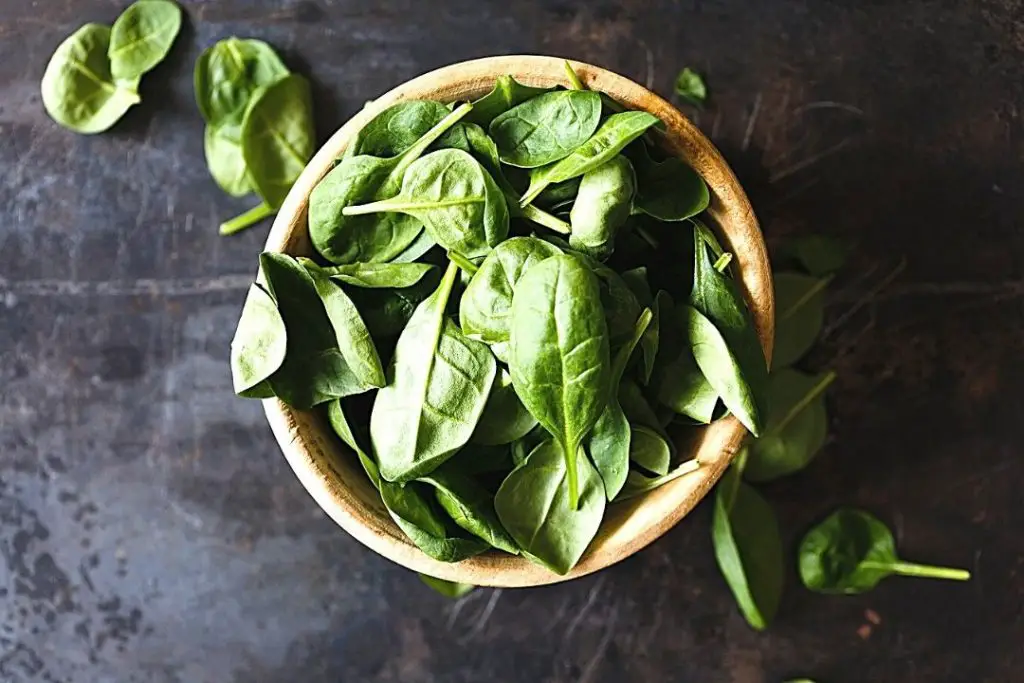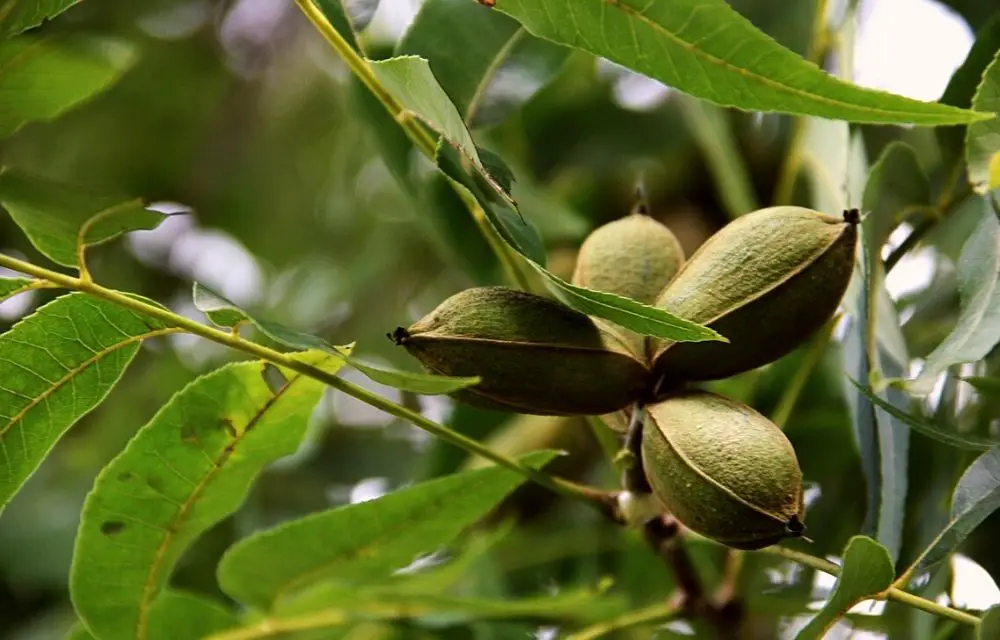This ones for those who found their way into discovering the magnificent construct of terrariums! Terrariums are now a trend amongst indoor gardeners. A somewhat equivalent of an aquarium that hosts a variety of water creatures, the terrarium is commonly a sealed glass container acting as a habitat for various plants and soil.
Which begs the question – what are the best plants for closed terrarium? Here are the 8 best plants you could choose from:
- Golden Pothos
- Peperomia
- Fern
- Nerve Plant
- Soleirolia Soleirolii (aka Baby Tears)
- Spike Mosses (aka Selaginella)
- Moss
- Pilea Microphylla Variegata
Terrariums are available both commercially or you could watch a few Youtube tutorials on how to get them done yourself from the very comfort of your home. A DIY terrarium can take up to an hour or two to build without burning a deep hole in your pockets as miniature plants usually only amount to several dollars each.
Got a friend who loves plants? Discard the bouquets and consider making them a terrarium as a sweet gesture or even a birthday gift perhaps? Terrariums are made both for the love of indoor gardening and for the aesthetics of it as well.
What is a Closed Terrarium?
Speaking of terrariums, they are essentially divided into two categories. There’s the open terrarium and the closed terrarium. Depending on the type of plants cared for within the glass container, one may choose to keep it close for the purpose of maintaining moisture and humidity, or one may also opt to keep it open for better airflow and temperature regulations.
Hence, choosing between an open terrarium or a closed one depends solely on the type of plants you wish to grow inside them. Open terrariums usually host plants that favour less humidity or soil moisture. On the other hand, closed terrariums host plants that favour those damp, humid conditions.
In this article, I will be answering all your questions on closed terrariums apart from recommending the best plants for closed terrarium and how to care for them. At the end of this, I will also be covering the most frequently asked questions on closed terrariums.
Not all plants are suited for the moisture-retaining environment of a closed terrarium. Where certain plants thrive in direct sunlight, closed terraria are commonly used as an ecosystem for plants that grow best in moist soil and humid conditions. An ideal choice would be tropical plants such as ferns, moss, air plants or even orchids.
These plants prefer more damp surroundings. Therefore, a sealed closed terrarium could mimic these conditions for these plants to thrive in. Usually, the closed terrarium is sealed for the purpose of regulating the circulation of water, with the accessibility to open it every now and then for maintenance and upkeep.
During maintenance, excess moisture is dealt with by cleaning the walls of the terrarium to prevent the spur of algae or mould. Algae and mould are one of the leading causes of why the inner walls of terrariums usually get discoloured, and why plants inside a terrarium get damaged. For this very reason, many beginners opt to start with an open terrarium as those conditions permit a lesser risk of fungal infections.
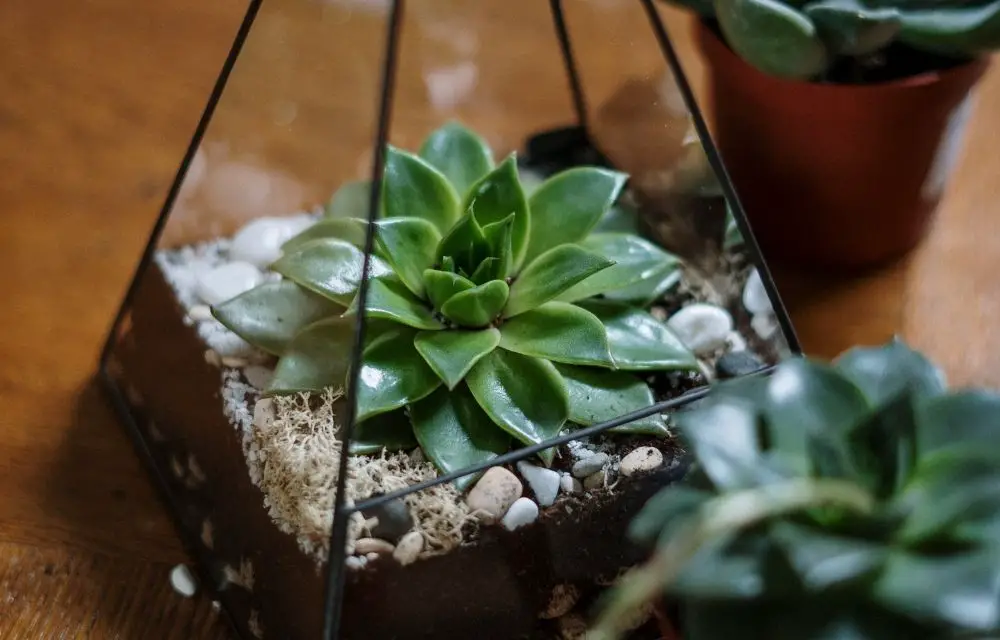
Top 8 Best Plants for Closed Terrarium
Golden pothos
Golden pothos (Epipremnum aureum), also commonly referred to as Devil’s Ivy is one of the easiest plants to grow indoors at home. Pothos are usually identified with heart-shaped leaves and a structure that grows in vines. This vine plant can be encouraged to grow on support structures such as window frames or hooks over a wall.
A typical Devil’s Ivy plant could grow up to about 20-30 feet indoors. However, they are usually kept shorter inside closed terrariums. If you’re only just starting out with a closed terrarium, the golden pothos should definitely be one of your top choices. The plant requires little maintenance and responsibility.
The pothos plant is not picky and sometimes is able to grow even in the least favourable of environmental conditions. In addition to being pest-free, golden pothos prefers bright indirect sunlight but they do not grow worse in the dark either. Provided that the plant is kept within a controlled warm temperature and with moderate to high humidity, you can expect a very independent and versatile plant growing well for your closed terrarium.
Touching on appearances, a golden pothos plant has bright foliage with a mixture of leaves on the shades of white, yellow and green. Keep in mind that since this vine plant can grow to amazing heights indoors, it would require pruning every now and then to maintain its growth.
Golden pothos is also sometimes referred to as the Ivy Arum and Solomon Island Ivy.
Peperomia
Baby Rubber plants, Watermelon Peperomia and Peperomia Caperata are some of the most sought for plants in the Peperomia family. However, the Peperomia Caperata definitely sets itself apart with its leaves of green with streaks of red. These are some of the thousand choices of Peperomia plants species you can choose from, to include in your closed terrarium.
Why are Peperomia plants considered one of the best plants for closed terrarium? Well, that is because similarly to Golden pothos, Peperomia plants also love warm and humid environments. Apart from being easily managed due to their compact size (they usually do not grow higher than 1 foot), they also present admirable foliage.
This family of plants also require little water, in which overwatering is usually a common issue faced by terrarium owners who choose to include the Peperomia in their little custom forest.
Peperomia plants, similar to many plants in closed terrariums, do not require bright direct sunlight to thrive.
Ferns
Little to moderate lighting coupled with humid and warm environments mostly make up the conditions in a closed terrarium. Ferns are hence one of many ideal choices to grow in your closed terrarium. Ferns come from a diverse background of multiple shapes and sizes to choose from, therefore choosing the slow-growing small sized ferns should be prioritized for your closed terrarium.
Ferns that don’t grow higher than 12 inches are suitable for terrariums. In case you do wish to grow selected types of fern, keep in mind that with moderate pruning, you may be able to grow ferns successfully to a size that is easy to manage within a closed terrarium. An example of ferns that grow below the mentioned size is the Dwarf Holly Fern (Scientific name: Cyrtomium Falcatum) which at its prime could grow up to 12 inches.
With its unique arching leaves, this is definitely a fern you could consider starting out with in a closed terrarium. Apart from that one, the Lemon Button Fern (Scientific name: Nephrolepis Cordifolia) is definitely another go-to choice for the closed terrarium. Like the other plants mentioned in this list, this fern thrives in the indoor humid and moist conditions of a terrarium, similar to its original habitat which usually is in the forest under areas with lots of shade.
However, if your closed terrarium is more on the higher end of humidity levels, consider the Maidenhair Fern (Scientific name: Adiantum Aethiopicum). This particular species of ferns is a fast grower and would require regular pruning to keep it at a manageable size. When it comes to watering, a common advice to go for would be to let your plant tell you. If it appears to be drying out, it needs watering.
Keep in mind that during low temperatures, the fern faces a risk of drying out.
Nerve Plant (aka Fittonia Albivenis)
Some nerve plant sellers also advertise the plant under the names of mosaic plants or painted net plants. Originally from the tropical rainforests of Peru, Fittonia Albivenis thrive in warm and humid conditions. Nerve plants grow low on the surfaces of the ground where there is partial shade from bright and direct sunlight.
They do, however, grow well even with bright light. If you’re looking to turn a few heads with your closed terrarium, you can not go wrong with having a nerve plant installed in it. Apart from the green leaves covered with hues of white and pink veins, these plants present attractive foliage as they mature. These plants grow up to 12-20 inches tall with a width expanding no more than 6 inches wide.
With that said, the nerve plant does stand out as a plant that is relatively bigger compared to the other plants mentioned so far. Therefore, regular pruning is a must to keep it at a manageable size. When it comes to watering, you can water a nerve plant occasionally even as it dries out between its watering schedule.
If you love plants but hate the pests that come along with them, the nerve plant is a good choice as it is not prone to pests. These plants do bloom with flowers, but many nerve plant owners opt to trim out the flowers to maintain the attractive consistency of the plant’s foliage.
If you’re one for having dense and colourful hues of foliage, you can pair a nerve plant with others that also have similar attributes to create combined colourful foliage within your terrarium.
You can choose to place the typical breed of the nerve plant or you could also get the dwarf cultivars of this species as it is better suited to handle the conditions of a closed terrarium.
Soleirolia Soleirolii (aka Baby Tears)
Baby Tears, much like the name, is a plant that is sure to bring a soft and gentle aesthetic visual effect to your closed terrarium. It is also commonly referred to as Angel’s Tears, Paddy’s Wig, Corsican Creeper and Helxine. Regular pruning is a must for this plant as it grows fast over a shorter period of time compared to the other plants mentioned so far in this article.
Another thing to look out for when caring for Baby Tears is that although this plant requires shade from bright light (not to be confused with harsh sunlight), it could still thrive in low-light surroundings. It would grow up to 2 inches tall with a width expanding anywhere around 18 inches. Apart from that, this plant will thrive in moist soil and will not mind a high level of humidity.
Provided with the right conditions and care, you can expect lush green bedding of tiny, round-shaped leaves at the bottom. Baby Tears do not like to be dried out. Therefore, regular watering is important and if they do dry out, they will wilt almost immediately and during these times, water them right away to help them recover.
This plant can be temperamental during temperature and season changes so one should look out for that if Baby Tears are cared for during that period.
If you’re looking for a plant to cover the lower grounds of your closed terrarium beautifully, this plant would definitely do the job.
Spike Mosses (aka Selaginella)
The Spike Moss can be confused with Baby Tears at times but to the trained eye, the differences are very much discernible. This is because similar to Baby Tears, this plant also provides a lush green carpet of leaves on the bottom areas of a closed terrarium. However, this plant is actually closer to the family of ferns as opposed to moss. With that said, this plant has similar requirements to the family of mosses.
This plant will thrive in low and indirect light. Direct sunlight should be avoided as it may cause the leaves to scorch in those conditions. With relatively moderate humidity, this plant can grow healthily in a closed terrarium under warm conditions. If the soil has a proper drainage system, this plant would do well in moist soil and could grow up to about 8 inches tall.
It is sought mostly for its admirable carpeting features. However, as it always goes for the fast-growers, pruning is key and Spike Mosses are known to overgrow a terrarium.
Spike Mosses do well with regular watering and will get damaged if left to dry out. This plant also goes by the names Golden Moss, Golden Club Moss and the African Club Moss.
Pilea Microphylla Variegata
A native plant of Brazil, this plant is generally quite small with the appearance that of moss or fern. Pilea Microphylla loves humid conditions with bright filtered light. Avoiding harsh and direct sunlight is a must. For this reason, many Pilea Microphylla owners sometimes grow it in their very own bathrooms.
This plant is usually referred to as the Artillery Plant. It has tiny green leaves of a succulent texture, but the variegated versions of this plant boast a tricoloured fern with hues of green, pink and white. Under the right conditions, you can expect your Pilea Microphylla to grow to a range of 8 to 12 inches tall.
This plant grows very slow so regular pruning will not be entirely necessary.
Be sure to maintain a humid environment, moist soil and a proper drainage system when caring for your Pilea Microphylla Variegata plant.
Moss
Didn’t we just cover Spike Mosses? If this confuses you, don’t fret just yet. Mosses and Spike Mosses are in fact different. What I mean here by Moss, refers to the variety of Mosses available that you can choose from to grow in your closed terrarium. With a vast library of sub species of Mosses available out there, heck! You could even have a closed terrarium dedicated specifically just Mosses.
Here’s a bonus, Mosses are actually one of the many best plants for closed terrarium. It is most commonly sought for, for that purpose. This family of Mosses thrive under full shades from sunlight, but they would still do well surviving under direct sunlight. Mosses get their water from absorbing water particles in the air and hence, they do prefer high levels of humidity.
Among the many Mosses out there, the ones that are the best plants for closed terrarium would be the Live Sphagnum Moss, Spoon Moss, Cushion Moss and Sheet Moss. Growing Moss in your closed terrarium not only boasts pleasant appearances, they actually help in regulating the humidity within the sealed jar and they also absorb toxins. This would be a great addition to your terrarium as it helps the other plants grow well too.
When properly cared for, these creatures could grow to a height ranging from 2 to 20 inches tall.
Closed Terrarium Care Guide
Depending on many variables, your guide to caring for a closed terrarium should be catered specifically to the shape and type of jar that you plan to use. Likewise, when deciding which plants to grow in your terrarium, these factors should be taken into consideration. It is always best to pick plants that require similar amounts of light, shed, humidity and water.
The goal of a closed terrarium is to mimic the natural habitat of these plants as much as possible. This means by doing it right, you can ensure that your glass terrarium can form its own ecosystem and rain system as well. How does this work?
By sealing a terrarium, the plants inside get their water requirements met from the process of evaporation. The top of the glass jar prevents vapour from leaving the habitat. This causes condensation of water into droplets onto the top part of the terrarium. These droplets then drop back as like how rain does, onto the plants. This cycle then provides a constant and regulated water supply and humidity.
Soil
Starting off with soil, one should know that in a healthy terrarium, the soil plays an important role in nourishing the plants that live in it. And when it comes down to soil mixing for terrariums, one should keep in mind 4 crucial factors. Water retention, drainage, support and strength. Achieving a balance between these 4 factors is key to having the perfect soil for your closed terrarium.
When it comes to soil selection for closed terrariums, potting mix unfortunately does not make the cut. Although it is easily available almost anywhere, potting soil however does not provide the terrarium with a proper drainage system. This causes a high risk for rotting to occur.
Soil layering in closed terrariums is important in providing the plants you grow in it to thrive the same way they would in their natural habitat. First off, you would want to start off with a drainage layer. The function of this layer is to ensure proper drainage of excess water on the bottom of the terrarium without it blocking the roots.
Be sure to have no more than 2 inches of this layer as any less could pose a risk of root rot. River rocks or even decorative aquarium gravel can be used for this layer. However, a popular choice would be pea gravel.
The second layer after that is the moss layer. This layer isn’t always used but it is important to create better separation between the drainage layer and the soil above it. A layer of dried moss above the drainage layer can prevent the soil above from mixing with the drainage layer. Over time, as more soil covers the ground below, this could pose a risk of mould and rot to your terrarium. By doing this, not only does your terrarium get an added visual effect, but excess moisture can also be absorbed.
The third layer is an optional layer that has strong benefits. For this layer, one may consider using activated charcoal as they are capable of removing toxin buildup inside your terrarium. Charcoal prevents odour buildup as well. Although this layer stands in third place right now, many closed terrarium owners place a little charcoal on the bottom of the terrarium as well. As mentioned before, this layer is optional and can be discarded if you are capable of maintaining the ideal conditions needed for your terrarium.
The fourth layer is the soil layer. This is where you will grow your plants. Here, you can use the good old potting soil as it is easily available and perfect for tropical plants. However, if you do wish to take it up a notch, you could follow the suggestion made by Cornell University in using African Violet soil.
The soil is lightweight and what this means is that it is capable of keeping your plants moist but without getting them soggy. If better drainage is what you’re looking for, consider making your own soil by creating a cocktail of peat moss, perlite and sterilized soil.
The final layer is also optional as it is purely for aesthetic purposes. Here you can opt to use decorative stones or coloured sands. Anything to make your terrarium more creative and more, you.
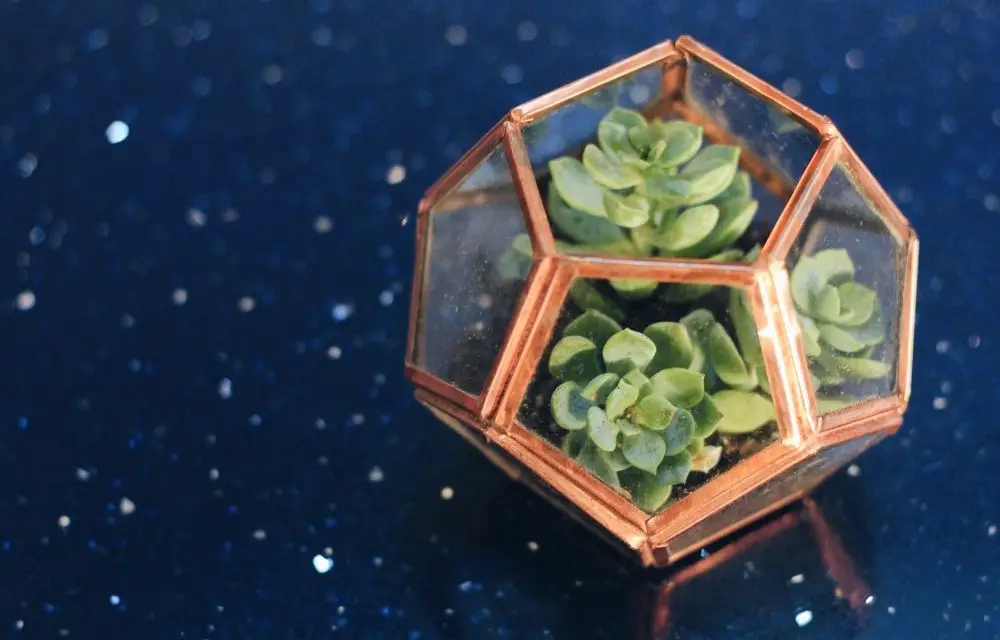
Light
If you’re not using artificial light for your terrarium, you may need to relocate it as necessary. It is a good rule of thumb to shield the terrarium from direct, harsh sunlight and to make sure that light isn’t scarce all the way. If light only shines from one direction, rotate your terrarium occasionally to ensure balanced light dispersion over all your plants.
Watering
Occasionally, you will have to pop up the lid of your closed terrarium if it requires watering. Let your terrarium tell you when you should water it. If the insides of your terrarium is foggy, this is an indicator that your terrarium has too much water in it. Although common in new terrariums, overwatering can also contribute to this.
If this happens, take a pause on the watering and lift up the lid to let the excess moisture dry out. Otherwise, you can water the soil evenly and tilt your container to make sure the water spreads out thoroughly. For precision, you may also opt to use a syringe to water each plant individually if you wish to attend to their specific water requirements.
Temperature
By now, you would have probably heard me go on and on about shielding your terrarium away from the direct harsh sunlight. Another reason why this is important is that sunlight can heat up the walls of a terrarium, eventually causing damages to your plants. This is why you should keep your terrarium where it receives an indirect but even distribution of sunlight.
Humidity
A closed terrarium is meant to have its own rain system. Hence, once you’ve set up your terrarium you technically do not need to do anything about the humidity levels. Closed terrariums naturally regulate their own humidity through the process of evaporation and condensation. If you want to keep your plants moist, you can treat them specifically by misting them using a water spray.
However, keep in mind that too much moisture can stimulate fungal spores. Therefore, remember to open the lid to allow ventilation when needed, so that the leaves can dry.
Fertilizer
Although not entirely necessary, if the plants inside your closed terrarium face specific nutrient deficiencies, you could bring fertilizers into the mix. However, this should be considered a last resort as it can very easily do more harm than good. Fertilizers can accelerate growth and for closed terrariums, you want to make sure that your plants grow at an average pace.
Toxicity
Toxins may build up within the walls of your terrarium over time. Using activated charcoal may be able to counter this situation as they are able to remove toxins.
Pruning
Imagine the garden in your backyard. It is beautiful and tidy now because you’ve not only planted the seeds but you’ve maintained them as they grow into mature plants. Likewise, a closed terrarium is nothing short of an indoor garden in a jar. Regular pruning is one of the main tasks involved in the upkeep of a terrarium.
Be sure to be mindful of what you prune and when. Prune precisely and moderately as too much pruning can actually kill a plant. A good point to note is to keep the leaves from being in direct contact with the walls of the terrarium. These leaves are more prone to mould and fungal issues.
Propagation and Growth
To propagate plants for your closed terrarium it depends on the type of plant that you are propagating as different plants have various methods of propagation. The two general types of propagation are sexual and asexual.
Repotting
Repotting and transplanting the contents of one closed terrarium to another isn’t always recommended but if you do need to do it, do it as you would when making a closed terrarium in the first place. Fill the vessel with the right layers of soil, charcoal et cetera. Remember to be careful and gentle when handling the plants.
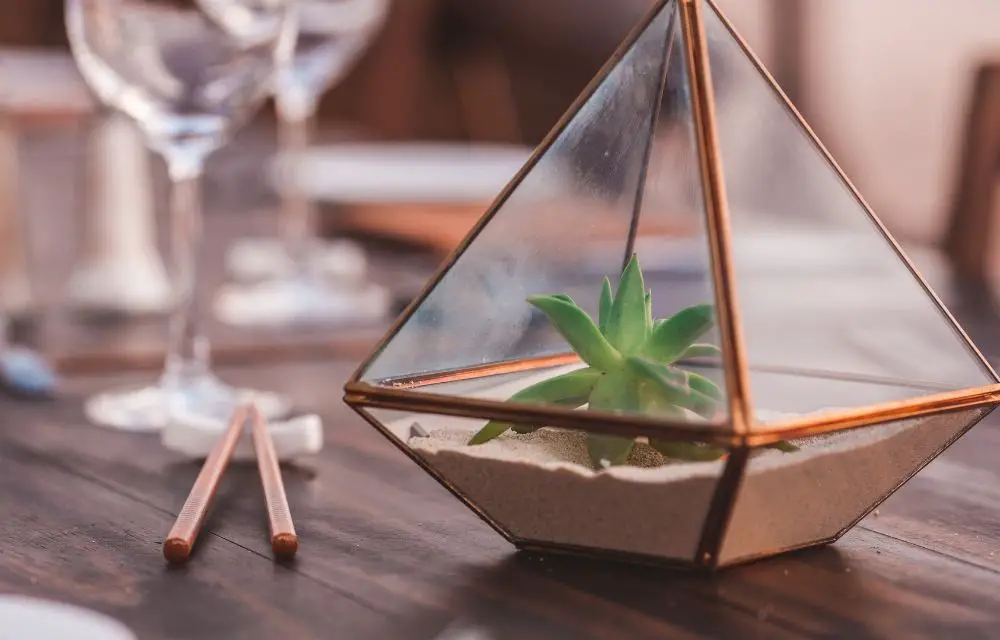
Common Issues with Plants for Closed Terrarium
Growth of mould and rot are common occurrences with plants in closed terraria. Keeping water and humidity balanced is key to prevent mould as overwatering is one of the main reasons why mould forms in the first place. If it does form on the walls of your terrarium, you can try leaving the container open for a few days to let it dry out.
However, this might only work for the not so severe cases of mold. You might also encounter pests as the humid conditions permit your terrarium to be the perfect habitat for a variety of insects. But, fret not as these insects may actually come with benefits. For example, millipedes feed on decay, while springtails are commonly introduced into terrariums as they feed on mold. For pests that could destroy your plants, use organic insecticides only on the infected areas of the plant.
Plants for Closed Terrarium Frequently Asked Questions
What plants do well in a closed terrarium?
Peperomia, Pilea plants, Nerve plants, Mosses, Selaginella, Ferns and English Ivy are some of the most common and ideal choices for a closed terrarium.
What do I need for a sealed terrarium?
Firstly, a jar, or any container made of glass and a lid to cover it. For the insides, all you would need is your cocktails of soil and your choice of plants.
What are the best plants to put in a terrarium?
The list goes on. Mosses boast pleasant appearances and actually help in regulating humidity. Baby Tears could provide your terrarium with beautiful bedding. For streaks of colours, consider the tricoloured Pilea Microphylla Variegata, with hues of green, pink and white.
Can a snail live in a closed terrarium?
Yes. Since a variety of land snails do live in similar climatic conditions, they can survive inside a closed terrarium as long as you provide them with water and a hole in the container for air to enter and escape.
Should terrariums be open or closed?
A personal choice as keeping a terrarium open or closed depends on the type of plants you wish to grow in them. Closed terrariums would be more favourable for Mosses, Ferns and Pilea plants whilst open terrariums would be the go-to for plants like the Panda Plant, Widow’s Thrill and Haworthia.
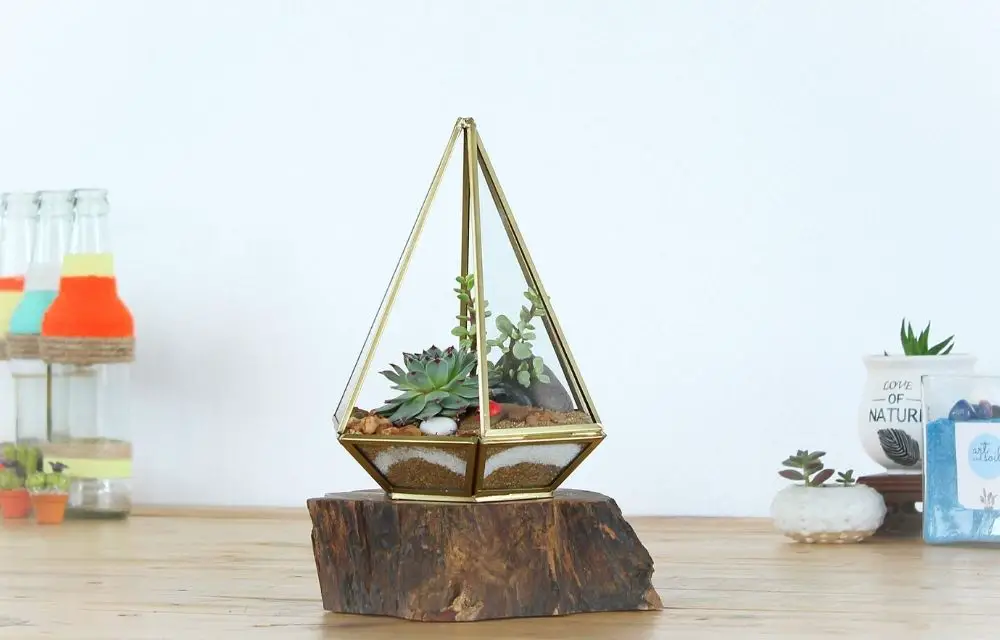
Conclusion
In the right conditions, your closed terrarium could be an independent ecosystem that could be self-sustained for years to come. Be mindful of the basic needs of plants and the conditional needs of having a closed terrarium and you’re all set. If you do wish to build your closed terrarium after this, keep this handy write-up close and build away! Or you could shop for DIY terrarium sets which equip you with all that you need to make a decent terrarium right from the comforts of your home.
Good luck!
If you had a good read up on the best plants for closed terrarium, you might want to check out these links as well:


